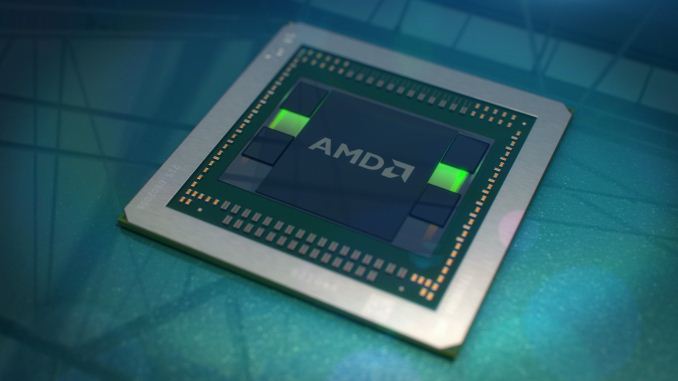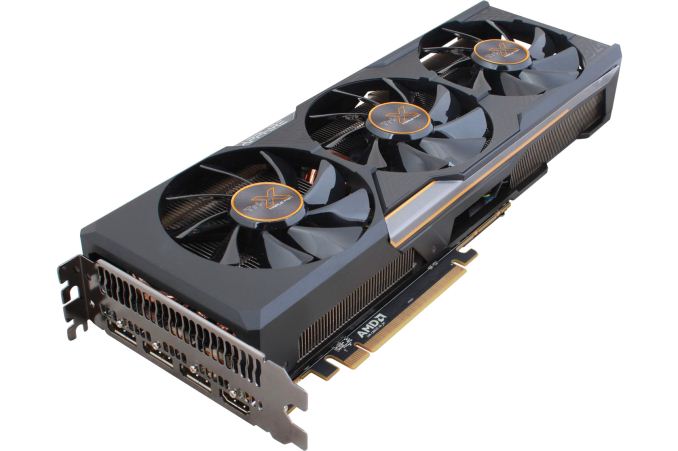The AMD Radeon R9 Fury Review, Feat. Sapphire & ASUS
by Ryan Smith on July 10, 2015 9:00 AM ESTFinal Words
Bringing this video card review to a close, we’ll start off with how the R9 Fury compares to its bigger sibling, the R9 Fury X. Although looking at the bare specifications of the two cards would suggest they’d be fairly far apart in performance, this is not what we have found. Between 4K and 1440p the R9 Fury’s performance deficit is only 7-8%, noticeably less than what we’d expect given the number of disabled CUs.
In fact a significant amount of the performance gap appears to be from the reduction in clockspeed, and not the number of CUs. And while overclocking back to R9 Fury X clockspeeds can’t recover all of the performance, it recovers a lot of it. This implies that Fiji on the whole is overweight on shading/texturing resources, as it’s not greatly impacted by having some of those resources cut off.
Consequently I can see why AMD opted to launch the R9 Fury X and R9 Fury separately, and to withhold the latter’s specifications until now, as this level of performance makes R9 Fury a bit of a spoiler for R9 Fury X. 7-8% makes R9 Fury notably slower than R9 Fury X, but it’s also $100 cheaper, or to turn this argument on its head, the last 10% or so that the R9 Fury X offers comes at quite the price premium. This arguably makes the R9 Fury the better value, and not that we’re complaining, but it does put AMD in an awkward spot.
As for the competition, that’s a bit more of a mixed bag. R9 Fury X had to compete with GTX 980 Ti but couldn’t surpass it, which hurt it and make the GTX the safer buy. On the other hand R9 Fury needs to compete with just the older GTX 980, and while it’s by no means a clean sweep for AMD, it’s a good outcome for AMD. The R9 Fury offers between 8% and 17% better performance than the GTX 980, depending on if we’re looking at 1440p or 4K. I don’t believe the R9 Fury is a great 4K card – if you really want 4K, you really need more rendering power at this time – but even at 1440p this is a solid performance lead.
Along with a performance advantage, the GTX 980 is also better competition for the R9 Fury (and Fiji in general) since the GTX 980 is only available with 4GB of VRAM. This negates the Fiji GPU’s 4GB HBM limit, which is one of the things that held back the R9 Fury X against the GTX 980 Ti. As a result there are fewer factors to consider, and in a straight-up performance shootout with the GTX 980 the R9 Fury is 10% more expensive for 8%+ better performance. This doesn’t make either card a notably better value, but makes the R9 Fury a very reasonable alternative to the GTX 980 on a price/performance basis.
The one area where the R9 Fury struggles however is power efficiency. GTX 980’s power efficiency is practically legendary at this point; R9 Fury’s is not. Even the lower power of our two R9 Fury cards, the ASUS STRIX, can’t come close to GTX 980’s efficiency. And that’s really all there is to that. If energy efficiency doesn’t matter to you then the R9 Fury’s performance is competitive, otherwise GTX 980 is a bit slower, a bit cheaper, and uses a lot less power. That said, AMD’s partners do deserve some credit for keeping their acoustics well under control despite the high power and heat load. It’s not an apples-to-apples comparison against the reference GTX 980 and its blower, but at the very least picking R9 Fury over GTX 980 doesn’t mean you have to pick a loud card as well.
And that brings us to the third aspect of this review, which is comparing the R9 Fury cards from Sapphire and ASUS. Both partners have come to the plate with some very good open air cooled designs, and while it’s a bit unusual for AMD to launch with so few partners, what those partners have put together certainly paint R9 Fury in a positive light.
Picking between the two ends up being a harder task than we expected, in part because of how different they are at times. From a performance perspective the two cards offer very similar performance, with Sapphire’s mild factory overclock giving them only the slightest of edges, which is more or less what we expected.
However the power and acoustics situation is very different. On its own the ASUS STRIX’s acoustics would look good, but compared to the Sapphire Tri-X’s deliciously absurd acoustics it’s the clear runner-up. On the other hand the ASUS card has a clear power efficiency advantage of its own, but I’m not convinced that this isn’t just a byproduct of the ASUS card randomly receiving a better chip. As a result I’m not convinced that this same efficiency advantage exists between all ASUS and Sapphire cards; ASUS’s higher voltage R9 Fury chips have to go somewhere.
In any case, both are solid cards, but if we have to issue a recommendation then it’s hard to argue with the Sapphire Tri-X’s pricing and acoustics right now. It’s the quietest of the R9 Fury cards, and it’s slightly cheaper as well. Otherwise ASUS’s strengths lie more on their included software and their reputation for support than in their outright performance in our benchmark suite.
And with that, we wrap up our review of the second product in AMD’s four Fiji launches. The R9 Fury was the last product with a scheduled launch date, however AMD has previously told us that the R9 Nano will launch this summer, meaning we should expect it in the next couple of months. With a focus on size and efficiency the R9 Nano should be a very different card from the R9 Fury and R9 Fury X, which makes us curious to see just what AMD can pull off when optimizing for efficiency over absolute performance. But that will be a question for another day.












288 Comments
View All Comments
Oxford Guy - Thursday, July 16, 2015 - link
"What exactly is the logic there?"I really need to spell it out for you?
The logic is that the 480 was a successful product despite having horrid performance per watt and a very inefficient (both in terms of noise and temps) cooler. It didn't get nearly the gnashing of teeth the recent AMD cards are getting and people routinely bragged about running more than one of them in SLI.
CiccioB - Thursday, July 16, 2015 - link
No, it was not a successful product at all, though it was still the fastest card on market.The successful card was the 460 launched few months later and surely the 570/580 cards which brought the corrections to the original GF100 that nvidia itself said it was bugged.
Here, instead, we have a card which uses a lot of power, it is not on top of the charts and there's really no fix at the horizont for it.
The difference was that with GF100 nvidia messed up the implementation of the architecture which was then fixxed, here we are seeing what is the most advanced implementation of a really not so good architecture that for 3 years has struggled to keep the pace of the competitions which at the end has decided to go with a 1024 shaders + 128bit wide bus in a 220mm^2 die space against a 1792 shader + 256bit wide bus in a 356mm^2 die space instead of trying to have the latest fps longer bar war.
AMD, please, review your architecture completely or we are doomed with next PP.
Oxford Guy - Tuesday, July 21, 2015 - link
"No, it was not a successful product at all"It was successful. Enthusiasts bought them in a significant number and review sites showed off their two and three card rigs. The only site that even showed their miserable performance per watt was techpowerup
Count Vladimir - Thursday, July 16, 2015 - link
So we are discussing 6 year old products now? Is that your version of logic? Yes, it was hot, yes, it was buggy but it was still the fastest video card in its era, that's why people bragged about SLI'ing it. Fury X isn't.Oxford Guy - Tuesday, July 21, 2015 - link
"So we are discussing 6 year old products now?" strawmancelebrevida - Thursday, July 16, 2015 - link
Looks like Jason Evangelho of PCWorld has the matter settled. In his article:http://www.pcworld.com/article/2947547/components-...
He shows that R9 Fury x2 is on par with GTX 980 Ti x 2 and blows away GTX 980 x2. Considering that R9 Fury x2 is much cheaper than GTX 980 Ti x2 and also R9 Fury is optimized for upcoming DX12, it looks like R9 Fury is the clear winner in cost/performance.
xplane - Saturday, October 17, 2015 - link
So with this GPU I could use 5 monitors simultaneously? Right?kakapoopoo - Wednesday, January 4, 2017 - link
i got the sapphire version up to 1150 stably using msi after burner w/o changing anything else